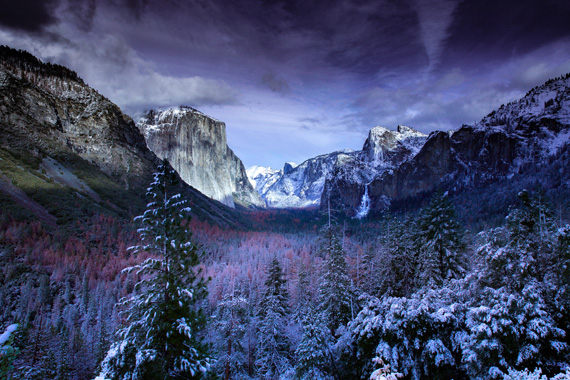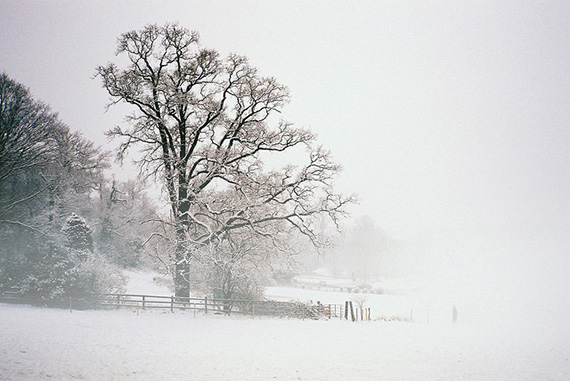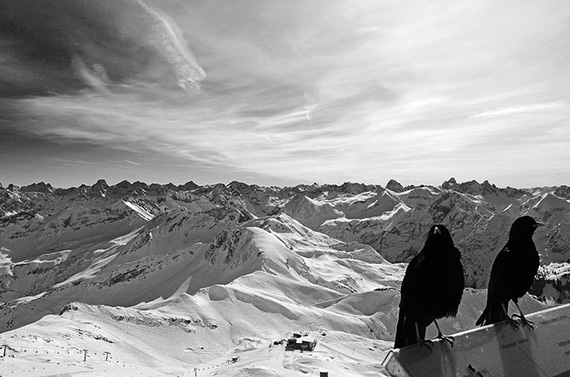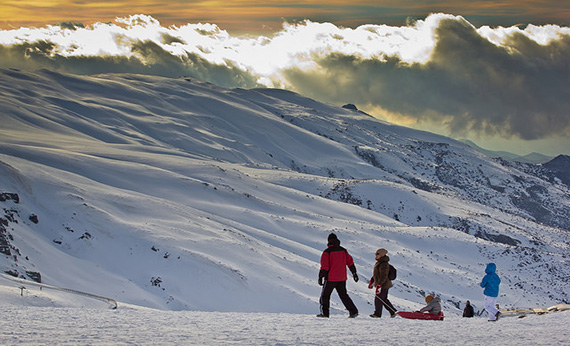Do you love being outdoors, or watching the world turn to a white winter wonderland? Are you fascinated with the first snow fall? If any of these ring true, you should consider landscapes with a winter scene as the main focus.

photo by James Donovan
Equipment for winter landscape photography
First is what you are going to wear and what you can carry along. You need to choose your clothing for warmth; you should have a hat, gloves, scarf, a nice thick coat with quality lining, snow boots, flannel shirts and corduroy pants. This may sound like a lot but really cannot go out taking winter shots in your jeans and tennis shoes and expect to take the time needed for a good shot.
You need to carry extra supplies for your camera, as well. Put what you can inside ziplock bags; it may be time consuming but it will keep the elements from attacking your gear. You want to carry extra batteries and memory cards or film. The cold can be hard on these and not having a spare when you need it is a bad idea. Be prepared.
Getting the perfect winter scene
You will find that the air is crisper and cleaner than other times of the year, which will help your pictures turn out more vibrant than before. However, the lighting will be much different as the snow reflects light. Try using a polarized lens filter to keep the extra light from ruining your picture.

photo by Nick Page
Different lighting changes the shapes and colors of everything. You might want to start out with the same shot once in the bright sunlight and another on a cloudy day. The contrast between the two will take your breath away.
Setting up your camera
The first thing you want to do after you’ve set up the tripod, is to make sure your flash is either turned off for daylight photos or set to a 2 or 3 second interval after taking the picture. This helps to ensure that your lighting is not disturbed or the picture has an unreal or fake feel t it.
You need to set the shutter speed to a longer setting or turn your exposure compensation up. This allows the light to filter in, bringing out the contrast in the objects of the image. You need to know the specifications on your camera before planning your winter landscape photography trip. It will help you to determine what your camera can and cannot handle.
When you’re using a digital camera, you need to allow your camera to adjust itself and then you can adjust the exposure time by noticing the differences in each picture you take. This is one of the nicer benefits of digital cameras; they have an LCD screen to view the picture you just took.

photo by Isengardt
Getting the color right
Remember that even though snow looks white, it normally takes on the colors of the sky and surrounding images. If the sky is grey, try using a colored filter, and for blue skies try using a correction filter instead. Remember that no matter the type of filter you’re using, it’s best to take multiple shots of the same setting, changing the lenses and exposure settings. This is called bracketing and will greatly improve your chances of getting that right shot.

photo by Hernán Piñera
Winter landscape photography can be both exhilarating and inspiring, but it takes time and practice to get the pictures just right. You might even consider carrying a notebook with you and marking what adjustments you made for each shot. You can then go back and see what worked and what didn’t and duplicate the right settings again.
About the Author:
When he isn’t fighting the weather and taking landscape photos in the midst of winter, Gary Machado is an internet marketer.
Like This Article?
Don't Miss The Next One!
Join over 100,000 photographers of all experience levels who receive our free photography tips and articles to stay current:






Maybe a mention of the need to underexpose for snow scenes, use grey card ?
I just ought to tell you which you have written an exceptional and distinctive post that I really enjoyed reading. Im fascinated by how nicely you laid out your material and presented your views. Thank you. deekaedaedfa
Checkout some photos based on your recommendations: http://www.bielousov.com/2013/snowshoeing-grouse-mountain/
Of course the advice to turn off the flash is kinda ridiculous because it’s a) kinda obvious and b) not always true: you might want to use it highlight some foreground objects which may appear too dark in counter light.
But the 2 key for winter photography are sky colour indeed and a snow texture.
What camera will be good for an amature like me
Not mentioned – take care of condensation when passing the camera from a warm house to a cold outdoors. I put my camera in the glove compartment of the car for a while before I use it.
Hi there!
Awesome site.. We love what you do and it would be amazing to have you in spanish and to comunicate and colaborate together. We are LA FOTOTECA, and iit would be great for our students to have a reference site so they can learn more about photography tips. We also make the GuatePHoto Festival and this year we receive more than 960 submissions for our open call. Lets comunicate, it would be awesome to do something together :)
Cristina Chavarria
La Fototeca
cultural projects coordinator
Thank you very much this will be very helpfull